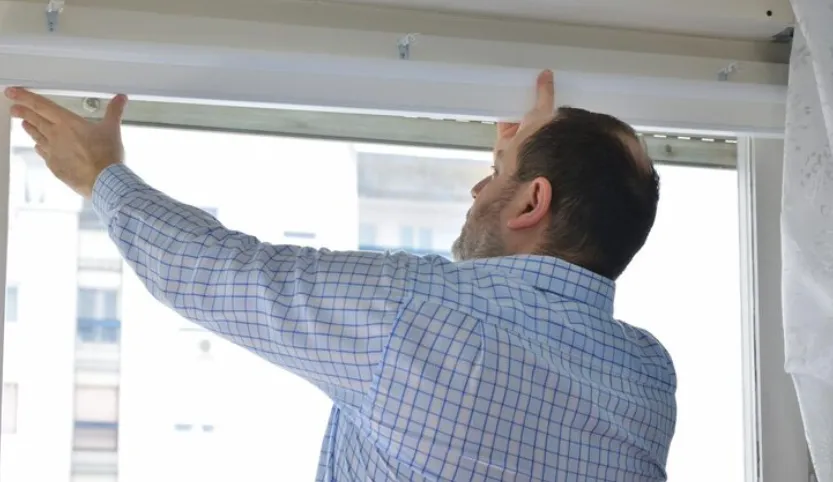
Window Blinds Installation Made Easy: Tools, Tips, and Common Mistakes to Avoid
Are you staring at your windows, wondering how to finally get those new blinds up (without breaking a sweat, or a drill bit)? You’re not alone. According to the U.S. Census Bureau, nearly 70% of homeowners opt for DIY home upgrades—yet window blind installation consistently ranks among the trickiest, with 1 in 4 DIYers reporting at least one failed attempt before getting it right. So, what gives? Why does something that looks so simple in the showroom end up so confusing—and, frankly, intimidating—when you get home?
Here’s the truth: installing window blinds is less about brute strength and more about precision, patience, and having the right know-how. Mess up a measurement, pick the wrong mounting hardware, or skip a step, and you’ll find yourself with crooked blinds, light leaks, or—worst of all—a pile of parts and mounting holes you’ll need to patch later. But don’t worry, you’re in good hands. In this guide, we’ll walk you through everything from choosing the right blind style for your space to measuring like a pro, and yes, installing your blinds with confidence.
Ready to transform your windows—and your peace of mind? Let’s get started.
Types of Window Blinds: Find Your Perfect Fit
Here’s the thing: Not all window blinds are created equal, and picking the right type isn’t just about style. It affects how you install them, how much light you block, and even how easy they are to clean. Let’s break down the most popular types of window blinds you’ll encounter—and why that matters for installation.
Venetian Blinds
These are the classic horizontal slats, usually made from aluminum, wood, or faux wood. They’re versatile, affordable, and easy to operate. But here’s a pro-tip: if you have kids or pets, consider cordless options for safety (the U.S. Consumer Product Safety Commission reports over 16,000 window blind-related injuries annually).
Vertical Blinds
Ideal for sliding doors or wide windows, vertical blinds use upright slats that slide side-to-side. Installation is a bit different—expect to mount a track instead of brackets. They’re great for large rooms but can look dated if you pick the wrong color.
Roller Blinds
Sleek and simple, roller blinds are fabric rolls that pull down. They’re perfect for minimalists and easy to install—just two brackets and you’re done. Look for blackout versions for bedrooms or media rooms.
Roman Shades
Roman shades bring a touch of elegance, folding up in neat pleats. They require precise measurements and careful mounting to ensure smooth operation. Installation is a bit more involved due to the fabric and mechanism, but the finished look is worth it.
Cellular (Honeycomb) Blinds
These are energy-efficient, trapping air in their hexagonal “cells.” Great for insulation, but slightly trickier to install—make sure you find studs or use drywall anchors. Proper installation can reduce heat loss by up to 40%, according to the Department of Energy.
Tip: Always check the mounting type (inside vs. outside) recommended by the manufacturer. Installing inside mount blinds requires more precise measurements than outside mount.
How to Measure for Window Blinds (and Avoid Costly Mistakes)
Ask any seasoned installer, and they’ll tell you: measuring is where most DIYers go wrong. And look, we get it—measuring seems simple. But one wrong number, and you’ll end up with blinds that don’t fit, leaving gaps or forcing you to return your purchase, and really, and who wants that hassle?
Inside Mount vs. Outside Mount
First, decide: do you want your blinds mounted inside the window frame for a clean, built-in look, or outside for maximum light coverage?
Inside mount: Measure the width in three places—top, middle, and bottom. Use the narrowest measurement. Do the same for height (left, center, right), but use the longest measurement.
Outside mount: Measure the width and height of the area you want to cover. Add 2-3 inches on each side for better light blockage and privacy.
Pro Tip: Always measure twice—and check for squareness. Even a slight misalignment can cause blinds to hang unevenly or fail to close properly. Use a carpenter’s square to ensure your window frame is truly level before installing.
Tools You’ll Need
Steel tape measure (not a fabric one—accuracy matters!)
Pencil and notepad
Level (for double-checking straightness)
Carpenter’s square (for tricky frames)
Pro Tips for Accurate Measurements
Round down to the nearest 1/8 inch for inside mounts—manufacturers will make slight deductions for fit.
Double-check your measurements before ordering. Over 30% of returns in the window blind industry are due to incorrect sizing.
Label each window as you go—especially if you’re measuring multiple rooms.
Choosing the Right Blinds for Your Space
Let’s be real: the “best” window blinds aren’t just about looks; they’re about function, budget, and lifestyle. Before you buy, ask yourself:
What’s the primary purpose? (Privacy, light control, insulation, style?)
How much maintenance are you willing to do? (Wood blinds require more care than vinyl or faux wood.)
Do you have kids or pets? (Cordless blinds are not only safer—they’re now required by law for most new sales in the US as of 2022.)
Popular Options & Their Pros/Cons
Faux Wood Blinds:
Look like real wood, resist moisture, cost-effective
Heavier than aluminum or vinyl (consider for large windows)
Aluminum Mini Blinds:
Lightweight, budget-friendly, easy to clean
Can bend easily; not as insulating
Cellular Shades:
Best for energy efficiency
More expensive, but often eligible for energy rebates.
Pro Tip: If available, order free samples from manufacturers before committing. Colors can look drastically different in your home’s lighting.
Step-by-Step: DIY Window Blind Installation Guide
Okay, let’s get down to the real reason you’re here: how to install window blinds—without cursing, calling your neighbor, or putting extra holes in your wall. We’ll walk you through the process, with personal tips and common pitfalls to avoid.
What You’ll Need
Drill with appropriate bits
Screwdriver (manual or powered)
Level
Step stool or ladder
Mounting hardware (included with most blinds)
Pencil
Step 1: Unpack and Inspect Your Blinds
Open the box and lay out all the parts. Check the instructions (yes, really!). Make sure you have all brackets, screws, and the blind itself. Missing pieces are more common than you’d think—about 12% of DIYers report incomplete kits.
Step 2: Mark the Bracket Locations
Hold the brackets where you’ll mount them (inside or outside the frame).
Use a pencil to mark screw holes. Double-check they’re level—crooked brackets = crooked blinds.
Step 3: Drill Pilot Holes
Use a drill bit slightly smaller than your screws to make pilot holes. This prevents splitting the wood or damaging drywall.
Step 4: Attach the Brackets
Screw in the brackets securely. For drywall, use anchors if you’re not hitting a stud.
Step 5: Mount the Blinds
Slide or snap the headrail into the brackets (follow your specific instructions).
Secure any locking mechanisms.
Step 6: Test Operation
Lower and raise the blinds. Tilt the slats or roll the shade up and down. Make sure everything moves smoothly.
Install cord cleats or tensioners if your blinds have cords (for safety).
Common Mistakes (and How to Avoid Them)
Skipping the level: Even a slight tilt is noticeable and annoying.
Using the wrong screws: If you’re mounting into concrete or metal, you’ll need specialty anchors.
Forgetting the valance or end caps: These finishing touches make a huge difference in appearance.
Personal Experience: The first time I installed blinds, I didn’t use a level and ended up with blinds that looked like a ski slope. I had to redrill the holes and patch the originals—don’t make my mistake!
Troubleshooting Tips
Blinds won’t fit? Double-check your measurements and mounting location.
Mechanism stuck? Remove the blinds and reinstall—sometimes the headrail isn’t fully seated.
Screws won’t hold? Use longer screws or better wall anchors.
Pro Tip: If you’re a visual learner, YouTube is your friend. But always double-check that the method matches your specific blind style and mounting type. Not all windows—or blinds—are the same.
Need more personalized advice? Contact Pro Shades and Blinds for expert consultation.
Key Takeaways
Measure twice, order once—precision is crucial for a seamless fit and look.
Choose your blind type based on function, style, and room needs—not just price.
Have the right tools ready before you start to avoid last-minute frustration.
Follow a step-by-step installation process, and don’t skip the level check.
Use educational resources (like videos and guides) for extra support.
Cordless blinds are safest for homes with children or pets—and often required by law.
When in doubt, consult a pro; proper installation protects your investment.
Conclusion
Look, installing window blinds isn’t rocket science—but it does require a bit of planning, patience, and attention to detail. By now, you’ve learned how to pick the right types of window blinds for your space, how to measure with confidence, and how to tackle the installation like a seasoned pro. More importantly, you’ve got access to the best educational resources and expert advice to guide you every step of the way.
Remember: take your time with measurements, double-check your work, and don’t be afraid to ask for help or consult a professional for tricky windows or specialty blinds. With these tips and tricks, you can transform your home’s look and functionality—and maybe even inspire a neighbor or two along the way.
Ready to start your project? Gather your tools, review your measurements, and dive in. And if you ever get stuck, reach out to Pro Shades and Blinds for personalized support.
